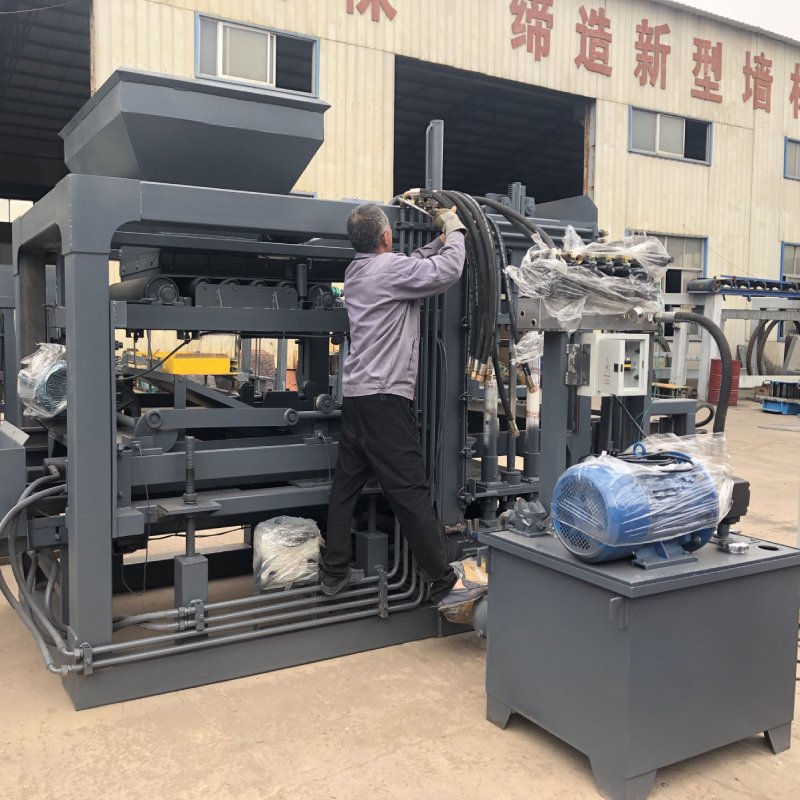
Image source Aiwei Block machine
Revolutionary Robotic Brick Machinery
Introduction
The construction industry is undergoing a transformation with the integration of cutting-edge technologies, and robotic brick machinery stands at the forefront of this revolution. Revolutionary robotic brick machinery is redefining construction automation, offering unprecedented levels of precision, speed, and efficiency in bricklaying processes. This article explores the groundbreaking advancements in robotic brick machinery, its impact on the construction industry, the benefits it brings to construction projects, and its potential for reshaping the future of construction automation.
- The Rise of Robotic Brick Machinery
The article begins with an overview of the evolution of bricklaying technologies, from manual labor to mechanized systems and, eventually, to the advent of robotic brick machinery. We discuss the driving factors behind the rise of robotics in construction, including the need for higher productivity, skilled labor shortages, and advancements in robotics and AI technologies.
- Understanding Robotic Brick Machinery
In this section, we delve into the key components and functionalities of revolutionary robotic brick machinery. We explore the use of sensors, cameras, and artificial intelligence that enable robots to analyze the construction site, plan bricklaying paths, and ensure precise brick placements. Additionally, we discuss the integration of automation and robotic arms that facilitate seamless bricklaying processes.
- Unparalleled Precision and Efficiency
One of the significant advantages of robotic brick machinery is its unparalleled precision in brick placement. This section explores how robotics eliminate human errors, resulting in perfectly aligned and level brickwork. We discuss the speed at which robots can lay bricks, significantly reducing construction timelines and enhancing overall project efficiency.
- Enhanced Safety and Workforce Collaboration
Robotic brick machinery not only improves precision and efficiency but also enhances safety on construction sites. This section examines the safety features of robotic systems, such as obstacle detection and collision avoidance, reducing the risk of accidents. We also discuss how robots work in collaboration with human workers, creating a safe and productive work environment.
- Environmental Sustainability
Environmental sustainability is a critical concern in the construction industry, and robotic brick machinery plays a role in addressing this issue. This section explores how automation leads to optimized material usage and reduced waste generation. Additionally, we discuss the potential for robots to work with eco-friendly building materials, such as recycled bricks and sustainable concrete mixes.
- Overcoming Challenges and Adapting to Different Projects
While revolutionary, robotic brick machinery faces challenges in adapting to various construction projects and site conditions. In this section, we explore how advanced programming and AI capabilities enable robots to navigate complex terrains, work around irregularities, and adapt to different brick types and sizes.
- Case Studies: Successful Robotic Brick Machinery Implementation
To showcase the impact of revolutionary robotic brick machinery, this section presents case studies of successful construction projects that utilized robotic bricklaying systems. We analyze the benefits brought by robots to each project, such as faster construction, increased precision, and reduced labor costs.
- The Future of Robotic Brick Machinery
The future prospects of robotic brick machinery are limitless. In this section, we discuss potential advancements in technology, such as multi-robot collaboration, swarm robotics, and human-robot interaction. We also explore the implications of 3D printing in bricklaying and its potential for on-site construction.
- Industry Adoption and Challenges Ahead
The widespread adoption of robotic brick machinery requires collaboration among stakeholders, including construction companies, manufacturers, and regulators. This section explores the challenges faced in the industry, such as initial investment costs, workforce upskilling, and regulatory frameworks, and how they can be overcome.
Conclusion
Revolutionary robotic brick machinery is redefining construction automation and paving the way for a more efficient, precise, and sustainable construction industry. With its unparalleled precision, speed, and safety features, robotic brick machinery is reshaping the way buildings and infrastructure are constructed. As technology continues to advance, the future of robotic brick machinery holds immense promise, with the potential to revolutionize construction practices and create a more sustainable and innovative future for the construction industry.
